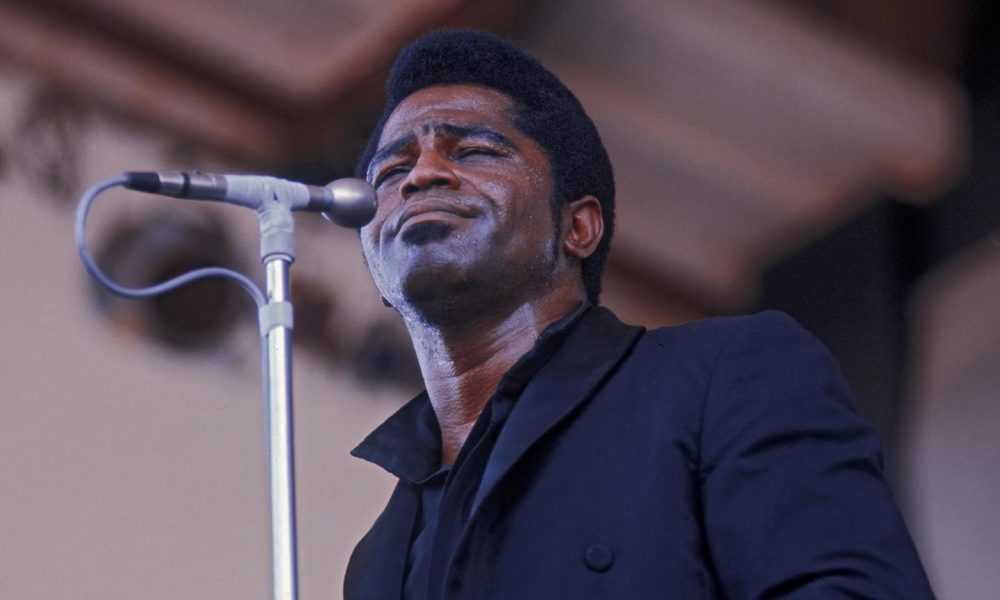Five Things We Learned from New Docuseries ‘James Brown: Say It Loud’
The four-part documentary sheds new light on the funkmaster’s life.

James Brown, the Godfather of Soul, changed the world. His career profoundly affected music, politics, cultural identity, and more. Now, his story is comprehensively covered by A&E’s four-part documentary series James Brown: Say It Loud. Executive produced by Questlove and Mick Jagger, among others, and directed by Deborah Riley Draper, it encompasses the acrophobia-inducing highs of James Brown’s life, the craterous lows, and everything in between.
The series unveils dizzying performance footage and revelatory interviews with the man himself that have never seen daylight before. Jagger, Questlove, Bootsy Collins, LL Cool J, Chuck D, Brown’s children, and others offer new commentary. There’s even a previously unheard song released by Republic Records/UMe to commemorate the event – preternaturally funky 1970 burner “We Got to Change,” featuring Bootsy, Bobby Byrd, and the rest of Brown’s bad-ass JB’s. Here’s just a handful of head-turning factoids gleaned from the doc.
His first paid performances were at a bordello
Before Brown was out of the single digits, he’d been abandoned by both parents and was living with an aunt in Augusta. She looked after little James but also happened to run a house of ill repute. She had a steady stream of customers from nearby Army training ground Camp Gordon. In the early days of WWII, young James picked up some cash by dancing for them, practicing the buckdancing tradition that went back to African American minstrelsy. When he got on the good foot years later, his moves had roots in those ad hoc performances at the brothel.
“Out of Sight” was the low-key launch of funk
There’s no denying Brown’s status as the man who forged the funk. But lots of people peg 1965’s “Papa’s Got a Brand New Bag” as the first funk tune. In fact, the galvanizing grooves at the core of that track were already fully in effect on the Godfather’s 1964 single “Out of Sight,” which achieved only modest notoriety compared to the public’s unconditional embrace of “Brand New Bag.” To quote Questlove’s commentary, “‘Out of Sight’ represents a major tempo shift in James Brown’s music. ‘Out of Sight’ had a slower, slinkier, sexier, syncopated groove. And the slower funk gets, the nastier funk gets.”
Would-be assassins pushed him toward politics
In 1966, James Meredith led the March Against Fear, a walk across Mississippi to get Blacks to register to vote. He was shot on the second day (he survived and is still with us today). Supporters flocked to the site to complete the march for him. James Brown flew to Tougaloo College to boost the cause upon the march’s completion, alongside the likes of Martin Luther King, Stokely Carmichael, Sammy Davis Jr., and Dick Gregory. According to African American Studies Professor Dr. Rickey Vincent, “Meeting with James Meredith galvanized James Brown’s sense of public service.” Just two weeks after that, Brown made his first social statement with his music, cutting “Don’t Be a Drop-Out,” the first step toward 1968’s historic “Say It Loud—I’m Black and I’m Proud.”
When Bowie borrowed from him, Brown borrowed back
Not only was David Bowie’s funky 1975 hit “Fame” indebted to the James Brown sound, the track’s lead guitarist and co-writer, Carlos Alomar, had played with Brown in the ‘60s. In the documentary, Brown’s engineer Bob Both recalls, “He got frustrated when other artists that were influenced by him started to make records that sounded like him. You think about ‘Fame,’ it sounds like a James Brown record with David Bowie singing… He would get annoyed, and then he would try to make a record to outdo that record.” That was the genesis of Brown’s “Hot (I Need to Be Loved, Loved, Loved),” which borrows the groove right back from “Fame” and cheekily quotes Alomar’s signature lick from the song.
The Godfather got down with Luciano Pavarotti
Luciano Pavarotti invited Brown to sing “It’s a Man’s Man’s Man’s World” with him at his May 28, 2002 Pavarotti & Friends concert to benefit Angolan refugees. At the massive outdoor concert in Pavarotti’s hometown of Modena, Italy (with the star-stacked bill also including Grace Jones, Sting, Andrea Bocelli, and Lou Reed), the two titans belted out the sweeping, drama-drenched tune with a full orchestra, alternating between Brown singing his original parts and his Italian duet partner delivering an operatic-style translation. When Brown’s agent Jeff Allen asked Pavarotti beforehand how he would decide what to sing, the opera legend replied casually, “I make it up.”
James Brown: Say it Loud premieres Monday, February 19 and Tuesday, February 20 at 8PM ET/PT on A&E.










